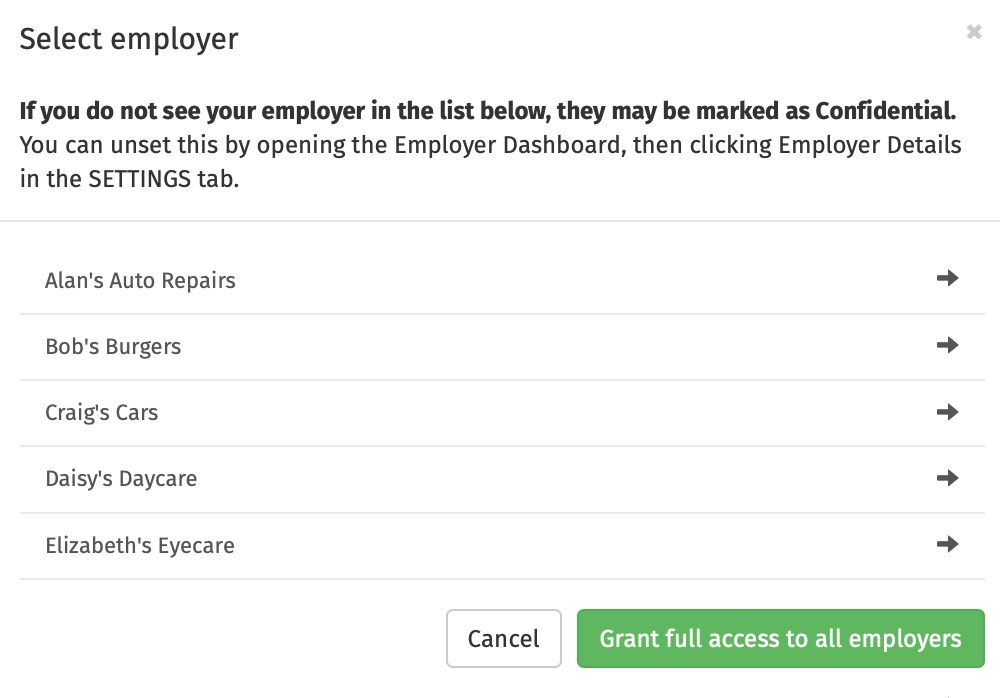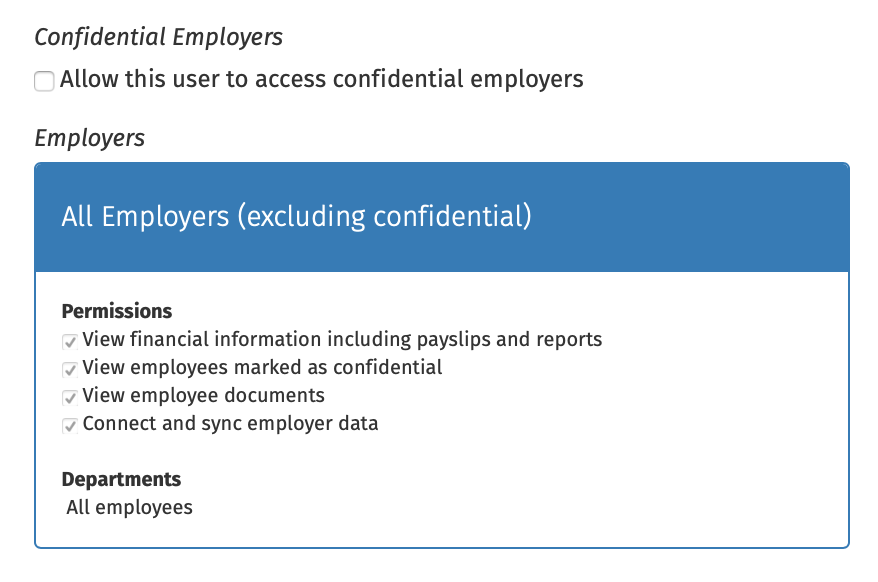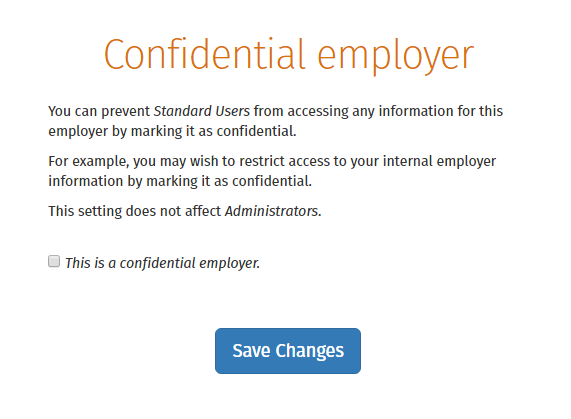Jan 2020
8
Minimum Wage Rates Increase from 1st April 2020
It has been announced that on the 1st April 2020 the minimum wage will increase by amounts ranging from 4.6% to 6.5%. The National Minimum Wage (NMW) is the minimum pay per hour that most employees are entitled to by law. An employee's age and if they are an apprentice will determine the rate they will receive.
These rates were recommended to the government by the Low Pay Commission, an independent body that advise on the national minimum wage and living wage. It is estimated that approximately three million workers will see pay increases due to the new rates being introduced. Employees aged 25 and over will see a rise of 51p from £8.21 to £8.72, which will result in an increase of £930 annually.
Please see the current rates and the new rates below:
| Rates from 1 April 2019 are | Rates from 1 April 2020 will be | |
| 25 yrs old and over | £8.21 per hour | £8.72 per hour |
| 21-24 yrs old | £7.70 per hour | £8.20 per hour |
| 18-20 yrs old | £6.15 per hour | £6.45 per hour |
| 16-17 yrs old | £4.35 per hour | £4.55 per hour |
| Apprentices under 19 or 19 or over who are in the first year of apprenticeship |
£3.90 per hour | £4.15 per hour |
It has also been recommended by the Low Pay Commission that the national living wage will be paid to employees aged 21 and over. The National Living Wage is an obligatory minimum wage currently paid to employees aged 25 and over that was introduced in April 2016. The government aims to achieve this recommendation by 2024.
Dec 2019
11
New Living Wage Rates Announced
The Living Wage Week ran from 11th to 17th November 2019 and as part of this week, the new Living Wage rate details were revealed on Monday 11th November 2019. The Mayor of London announced the London rate for the Living Wage whereas the UK rate is announced countrywide at the same time.
The UK Living Wage rate has increased by 30p per hour to £9.30, an increase of 3.3%.
The new London Living Wage, announced by the Mayor of London, Sadiq Khan, has increased by 20p from £10.55 to £10.75 per hour. This is a 1.9% increase and this rate is £2.54 higher than the legal minimum wage set by the Government. This helps reflect the higher cost of living facing families in the city.
There are now 1,700 London Living Wage accredited employers in London such as London City Airport and Crystal Palace Football Club. With this increase, London full time employees who receive the Living Wage will be almost £5,000 better off than other employees in London on the minimum wage.
According to the Trust for London, almost 20% of employees in London are paid less than the Living Wage which include 60% of jobs in the hotel and restaurant sector and 40% in the retail sector.
For information about the Living Wage Foundation and Living Wage Week visit the Living Wage Foundation website.
Dec 2019
6
Advisory Fuel Rates updated from 1st December 2019
HMRC has issued details regarding the latest Advisory Fuel Rates for company cars.
From the 1st December 2019 employers may use the old rates or new rates for one month. Employers are under no obligation to make supplementary payments to reflect the new rates but can do so if they wish. Hybrid cars are treated as either petrol or diesel cars for this purpose for the fuel rates.
The rates are as below:
| Engine Size | Petrol- amount per mile | LPG - amount per mile |
| 1400cc or less | 12 pence | 8 pence |
| 1401cc to 2000cc | 14 pence | 9 pence |
| Over 2000cc | 21 pence | 14 pence |
| Engine Size | Diesel - amount per mile |
| 1600cc | 9 pence |
| 1601cc | 11 pence |
| 2000cc | 14 pence |
For fully electric cars the Advisory Electricity Rate is 4 pence per mile. But electricity is not a fuel for car fuel benefit purposes. Please click here to see all details as per HMRC.
Sep 2019
5
Changes to Student Loans from 6th April 2020
New rates for the tax year 2020/21 for Student Loan Plans 1 and 2 have been announced by the Department of Education. The Student Loan Plan 1 rate will rise to £19,390 on 6th April 2020 from £18,935. The current Plan 2 rate of £25,725 will also rise to £26,575. Earnings above the thresholds for both Plan 1 and Plan 2 for 2020/21 will be calculated as normal at 9%.
The rate of the postgraduate loan type introduced in the 2019/20 tax year of £21,000 will remain the same in 2020/21 and will continue to be calculated at 6%.
Summary of the Student Plan thresholds:
- Plan 1 loans will increase by £455 from the current threshold of £18,935 to £19,390 in 2020/21.
- Plan 2 loans will increase by £850 from the current threshold of £25,725 to £26,575 in 2020/21.
This figure will apply to all current and future borrowers for whom employers make Student
Loan deductions. In BrightPay Payroll Software 2020/21, the new student loan repayment thresholds for both plans will automatically be calculated and the appropriate student loan deduction applied.
Aug 2019
20
Three day easement for FPS to continue
HMRC have confirmed they are continuing the three day easement for filing of Full Payment Submissions that was introduced in 2015. Employers are required to file their PAYE information to HMRC on or before each payment date, which is the statutory filing date, unless the circumstances set out in the 'sending an FPS after payday guidance' are met. The three day easement is not an extension to the statutory filing date. No late filing penalties will be charged for late filing up to three days after the statutory filing date.
Employers can get a penalty in the following circumstances:
- The Full Payment Submission was late
- Failure to send:
- Expected number of FPS
- An Employer Payment Summary when there were no payments made to any employees in a tax month
HMRC had advised they will not charge a penalty if:
- The FPS is late but all reported payments on the FPS are within the three day period of the employees’ pay date. However, employers who consistently are filing their returns for up to three days after the payment date may be contacted by HMRC or considered for a penalty.
- The employer is a new employer and the first FPS is sent within thirty days of paying an employee
- It is the first time the employer has failed to send an RTI on time in the tax year (does not apply to employers with an annual scheme)
Jul 2019
18
Proposed Changes for the Employment Allowance for 2020-21
The Employment Allowance was introduced on 6 th April 2014 by HMRC as an allowance to reduce businesses’ and charities employers’ national insurance liability for the tax year. The employer Class 1 National Insurance contributions (NICs) would be reduced up to the maximum of the allowance in the tax year. The allowance was introduced at £2,000 in the tax year 2014-15 but it was increased to £3,000 from 6 th April 2016 to the current tax year.
HMRC are in the process of drafting legislation to change the Employment Allowance for employers. The main change would be that to focus the Employment Allowance on small to medium businesses in the case that employers with a liability of Class 1 secondary National Insurance of £100,000 or more in the preceding tax year will not be able to claim the Employment Allowance. In order for an employer to be able to claim the Employment Allowance for the tax year, they must have space for the full Employment Allowance within their relevant de minimis state aid threshold.
HMRC intend for this legislation to come into effect from 6 th April 2020, once the regulations are published under powers in section 5 of the National Insurance Contributions Act 2014. In October 2019 a final version of the guidance will be published and made available for employers to view.
Jun 2019
27
The P11D filing deadline is almost here
As an employer, if you provide expenses or benefits to employees or directors, you may need to tell HM Revenue and Customs (HMRC) and pay tax and National Insurance on them. The means of reporting these details to HMRC is on a P11D and P11D(b) form. The P11D is a statutory form required by HMRC from UK based employers detailing the cash equivalents of benefits and expenses that they have provided during the tax year to their directors and employees. Your P11D(b) tells HMRC how much Class 1A National Insurance you need to pay on all the expenses and benefits you’ve provided.
The deadline for reporting these details to HMRC for the tax year 2018-19 is on or before the 6th July 2019. An employer will get a penalty of £100 per 50 employees from HMRC for each month or part month the P11D(b) is filed late. The employer needs to ensure that employees employed on 5th April 2019 receive their P11D / P9D by 6th July 2019. The deadline for the employer to submit payment to HMRC for the liability for Class1A National Insurance owed on benefits or expenses is 22nd of July (or 19th July if you pay by cheque).
Examples of expenses and benefits include:
- company cars and fuel
- health insurance
- travel and entertainment expenses
- childcare
Some business expenses or benefits do not need to be reported to HMRC such as business travel, business entertainment expenses, telephone bills and uniform and tools for work.
BrightPay can produce a P11D for sending to HMRC after year end, which includes your Class 1A NICs declaration and details of the expenses and benefits provided including cash equivalents. If the P11d(b) has been already submitted to HMRC from BrightPay and amendments have to be made you must submit using a paper form.
Click here for more information.
May 2019
31
New User Management Interface for Connect
Our new User Management feature for BrightPay Connect makes it more seamless and quicker for users to be set up or amended. It offers the option to select permissions for multiple employers at one time for a standard user. There is also a new permission to allow standard users to connect and synchronise employers from BrightPay to Connect and a new feature to mark an employer as confidential.
Types of Users for Connect
- An administrator has full control over a BrightPay Connect account, with the ability to edit account settings, add other users, redeem purchase codes, connect employers and manage all employer and employee information and processes.
- A standard user typically has access to just one employer in your BrightPay Connect account, although they can be granted access to multiple employers if required. A standard user can view employer (and associated employees) information with various levels of restrictions and permissions.
User Permissions & Confidential Employers
As before, standard users can be set up so that they are restricted by department, so that they can only see information pertaining to employees that are associated with a particular department. They can also be restricted from accessing certain information, such as the ability to:
- View financial information including payslips and reports
- View employees marked as confidential
- View employee documents
- NEW: Connect and synchronise employer data
- Approve employee self-service requests
You now also have the option to grant a standard user access to all current employers, along with any new employers linked to the Connect account. Simply select ‘Grant Full Access to all Employers’ and select the permissions you wish to be applied to the user, including the new permission to Connect and Sync employer data.


If required, an employer in Connect can be marked as confidential under the settings tab on the employer’s dashboard and only administrators on the Connect account will be able to view this employer. Standard users can only access confidential employers if they are given permission to do so.

Inviting your client as a user
If the employer details are entered in the ‘Client Details’ tab in the employer section in BrightPay, the employer can be added as a standard user by the bureau very quickly and easily. On the employer’s dashboard in Connect, you will see the option to ‘Invite your Client’. Selecting this populates the client’s information for a new standard user and you can then choose the permissions for the client.
Oct 2018
19
Announced Change to Apprenticeship Levy
The Chancellor Philip Hammond announced at the Conservative Party Conference that from April 2019 large employers paying the apprenticeship levy will be able to transfer up to 25% of their apprenticeship levy funds to businesses in their supply chain.
He is reported to have said “We have heard the concerns about how the apprenticeship levy is working, so today we’ve set out a series of measures to allow firms more flexibility in how the levy is spent. But we know we may need to do more to ensure that the levy supports the development of the skilled workforce our economy needs.”
The apprenticeship levy is paid by employers and will help fund new apprenticeships in the future. This levy of 0.5% is charged on employers’ pay bills which will be based on the total employee earnings subject to Class 1 secondary NICs. The levy is payable through Pay As You Earn (PAYE) and is payable alongside Income Tax and National Insurance.
Currently, an employer paying the apprenticeship levy can transfer up to 10% of their apprenticeship service funds to one other employer. In June this year Skills Minister Anne Milton announced that from July 2018 an employer paying the apprenticeship levy can make transfers up to 10% to multiple employers. This transfer option is the first large flexibility HMRC have offered to employers to assist in making apprenticeships work better for everyone.

We will not be able to email you about webinar events, special offers, legislation changes, other group products and payroll related news without you subscribing to our newsletter. You will be able to unsubscribe at anytime. Don’t miss out - sign up to our newsletter today!
Aug 2018
16
Threshold to rise for Student Loan repayment in Scotland
From April 2021 the student loan repayment threshold will rise to £25,000 in Scotland. Before graduates start to pay back their loans they will have to earn at least £25,000. The First Minister announced this change along with plans to reduce the maximum repayment period for student loans by 5 years, from 35 years to 30 years.
Currently, the student loan repayment threshold is £18,330 for Student Loan Plan 1 for 2018-19. Student Loan Plan 1 is for pre-2012 loans, the threshold for 2017-18 was £17,775.
For Student Loan Plan 2, the current student loan repayment threshold is £21,000 for 2018-19. The student loan repayment threshold for postgraduate loans is also £21,000, these loans are due for repayment through the PAYE system from April 2019.
Are you missing out on our newsletter? We will not be able to email you without you subscribing to our mailing list. You will be able to unsubscribe at any time. Don’t miss out - subscribe today!








